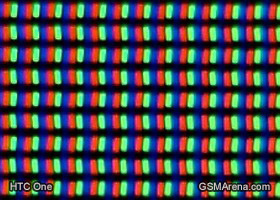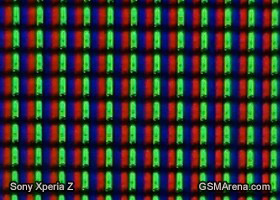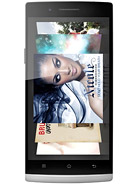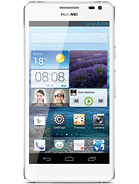
HTC One review: To rule them all
Key features
- Quad-band GSM/GPRS/EDGE support; 3G with HSPA; LTE
- 4.7" 16M-color 1080p Super LCD3 capacitive touchscreen with 469ppi pixel density
- Android OS v4.1.2 Jelly Bean with Sense UI 5.0
- Quad-core 1.7 GHz Krait 300 CPU, 2 GB RAM, Adreno 320 GPU; Qualcomm Snapdragon 600 chipset
- 4 MP autofocus "Ultrapixel" camera with 1/3'' sensor size, 2µm pixel size; LED flash
- 1080p video recording @ 30fps with HDR mode, continuous autofocus and stereo sound
- HTC Zoe
- 2.1 MP front-facing camera, 1080p video recording
- Wi-Fi a/b/g/n, Wi-Fi Direct and DLNA; Wireless TV out
- GPS with A-GPS, GLONASS
- 32/64GB of built-in storage
- MHL-enabled microUSB port
- Bluetooth v4.0
- NFC
- Standard 3.5 mm audio jack
- Accelerometer and proximity sensor
- Active noise cancellation with dedicated mic
- Aluminum unibody
- Front-mounted stereo speakers with BoomSound tech
- Class-leading audio output
Main disadvantages
- 4MP camera has disappointing performance in good lighting conditions
- Non-expandable storage
- Awkwardly-placed and uncomfortable power button
- Sense UI still lacks connectivity toggles in notification area
- Non user-replaceable battery
- Poor video and audio codec support out of box
Design and handling
The combination of metal and glass gives the HTC One a premium feel that few other smartphones can match. The handset is an instantly recognizable HTC device following the design philosophy of its predecessors, but is clearly more sophisticated than any of them - without being overdesigned.The exquisitely built HTC One wouldn't look out of place in a luxury phone shop alongside Vertus, Mobiados and the likes. Even the glass-clad Sony Xperia Z, which oozes with style, can't match the compelling simplicity of the HTC One. The Apple iPhone 5 probably comes the closest, but its design is starting to get a little played out and there's way too much bezel at the front.
Handling the HTC One
The HTC One is a bit narrower than the HTC One X, which makes its handling a bit easier. A slimmer waistline might have helped even further, but let's not get greedy. To put things into perspective though, the Galaxy S4 about the size of the HTC flagship (slimmer, and a tad shorter) and has a larger screen at that.
Display
The HTC One has a brilliant 4.7" Super LCD3 screen, not a 5-incher, which is becoming the flagship standard. The One's screen is 12% smaller than the 5" models, but boasts a pixel density of 469ppi, up from 441ppi.
The 4.7" 1080p Super LCD3 is simply gorgeous
The 300+ ppi screens of last year's flagships are pretty close to the limit, but the jump to 400+ ppi isn't about individual pixels - it was already pretty hard to see jagged edges on 720p screens but the 400+ ppi displays look smoother still. The difference between the 469ppi of the HTC One and the other 1080p screen out there (even the 401ppi LG Optimus G Pro) isn't the kind that can be easily seen. Anyway, we assume HTC were driven by a screen size they considered most usable, rather than trying to top some pointless pixel density charts.


HTC One and Sony Xperia Z display matrices compared
HTC has been putting out some excellent screens recently and the One's display is just another example of this. The contrast is impressive and the viewing angles are extremely wide - there's no shift in colors and only a slight contrast loss at extreme angles.
| Display test | 50% brightness | 100% brightness | ||||
| Black, cd/m2 | White, cd/m2 | Black, cd/m2 | White, cd/m2 | |||
| HTC One | 0.13 | 205 | 1580 | 0.42 | 647 | 1541 |
| HTC Butterfly | 0.14 | 173 | 1200 | 0.45 | 501 | 1104 |
| Sony Xperia Z | - | - | - | 0.70 | 492 | 705 |
| Oppo Find 5 | 0.17 | 176 | 1123 | 0.51 | 565 | 1107 |
| Samsung N7100 Galaxy Note II | 0 | 215 | ∞ | 0 | 402 | ∞ |
| LG Optimus G Pro | - | - | - | 0.41 | 611 | 1489 |
| Samsung I9300 Galaxy S III | 0 | 174 | ∞ | 0 | 330 | ∞ |
| Nokia Lumia 920 | - | - | - | 0.48 | 513 | 1065 |
| LG Optimus G | 0.14 | 197 | 1445 | 0.33 | 417 | 1438 |
| Apple iPhone 5 | 0.13 | 200 | 1490 | 0.48 | 640 | 1320 |
The screen is laminated too, for a maximum close fit between individual layers, bringing the image as close as possible to the surface of the glass.
The only area of the HTC One screen performance that is not quite perfect is sunlight legibility. It's still good, helped by its good brightness levels, but it's not quite up there with the best we have seen.
Sense UI 5 centered on BlinkFeed
The HTC One runs Android 4.1.2 Jelly Bean, but more importantly it comes with the latest version of Sense UI, 5.0. Much like Samsung, HTC prefers to add its own exclusive features to Android, instead of marching to Google's drum.Here's a quick overview of the HTC One interface:
The lockscreen looks different but it is unchanged in terms of functionality. There's a clock, weather info and four (not five) shortcut slots. You can put a folder instead of an app shortcut if you need more than four apps accessible right from the lockscreen. Missed calls and incoming messages are duly displayed too of course.
There's no way to change lockscreen shortcuts independently from the ones docked on the homescreen. Many users may find that inconvenient - LG and Samsung both let you do that.


The new lockscreen has no new functionality
The homescreen is quite different, however. The leftmost pane is called BlinkFeed and looks quite a bit like Flipboard. It aggregates posts from your social networks and stories from over a thousand news sources. You can pick what topics you're interested in and BlinkFeed will automatically pull relevant content. You can also search for specific content.




BlinkFeed is the default homescreen pane
You're not stuck with BlinkFeed if you don't like it - the rest of the homescreen panes are the standard type with shortcuts and widgets and you can set one of them to the be default one (the one you get to when you tap Home). You can't remove the BlinkFeed panel altogether, though.



BlinkFeed options • Posting
If you have social network accounts linked, you can post on them straight from BlinkFeed, including sharing stories that you've come across on the feed.
Overall, BlinkFeed feels similar to a Flipboard widget, except that it's not a widget, which lets it function better by getting extra gestures. On the other hand a widget would have been easy to move across homescreen panes, delete and even resize, so you can combine it with shortcuts or other widgets on the same pane.
Getting rid of the dedicated Menu button is perhaps emerging as a trend in Android - a button in the app interface itself was the Nexus 4's approach, later adopted by the HTC One X and now by the HTC One too, which doesn't have a Menu key at all. In the BlinkFeed and the app drawer for example, a hidden bar with settings appears when you swipe down on the screen. It works pretty nicely and gives you extra functionality without wasting any screen estate.


Swiping down reveals a menu bar with options
It's an interesting addition considering Android isn't too fond of gestures, especially compared to something like the BlackBerry OS 10. But apps will need to specifically support this and most apps will still have a menu button integrated into their UI. Older apps that rely on a dedicated Menu key (be it physical or on-screen) run with a black bar at the bottom just for an on-screen Menu key (not many of those left, but it happens).


The hidden bar
The notification area is one aspect of the interface where the HTC Sense has been behind the curve for a long time now. Sense 4 didn't offer dedicated power toggles in the pull-down - Wi-Fi, Bluetooth, Mobile Data, and the likes - and Sense 5 does nothing about that either.You get notifications, the clock and date, a Power Saver toggle and a shortcut to go into the settings menu and that's that.


The notification area
Beyond what we just listed, Sense UI 5 feels very similar to its predecessor. You get up to four homescreen panes to fill with shortcuts and widgets (the fifth is reserved for BlinkFeed). Upon a pinch zoom, the enabled homescreen panes are displayed in the top one third of the screen, the rest available to the interface for adding widgets and shortcuts.
Widgets are pulled out of a dedicated container and are not displayed in the app drawer, which we find to be the more intuitive approach. Another notable difference from Samsung TouchWiz and the LG Optimus UI is that the HTC One's homescreen panes cannot be scrolled in a loop. It seems, HTC cannot quite decide on a permanent solution - the Butterfly had circular scrolling enabled.


BlinkFeed aside, the homescreen is pretty standard
In the homescreen management interface, you can set any of the panes as default - including the BlinkFeed.




Managing the homescreen
As for the app drawer itself, the default layout is a 3 x 4 grid of icons, which does not make best use of the large, high-res screen. The icons aren't even bigger than usual, they just have plenty of padding. Luckily, you can switch to a 4 x 5 grid. It's an Apple-style vertically scrollable list with an auto-hiding scroll bar on the right, indicating the number of "pages" the list of apps extends across. That's it, no extra tabs for widgets or recent downloads.


A 3 x 4 and 4 x 5 grid for the app drawer
The sorting options (alphabetical, custom and chronological) are available on a hidden toolbar that shows upon a swipe down in the top page of the app drawer. It has shortcuts as well to the Google Play Store and Search, and lets you manage apps and select grid size.

Sorting options
HTC has done well to remodel the task switching interface - recent apps are now displayed in a 3 x 3 grid of thumbnails, which makes way better use of all the available screen size and resolution. It's a single screen that cannot be scrolled, so nine of the most recently used apps is the most you can get. To terminate apps you have to swipe up or down (not left or right). The task switcher launches upon a double tap of the Home button.


Task switcher
The settings menu isn't dramatically changed in the latest Sense. It has the same design but the app icons and toggles have been redone. Everything is where you'd expect it to be.



The settings menu
Wallpapers, lockscreen style, ringtones, notification sounds and alarms can be customized straight from here.
There's a choice between several lockscreen styles, including Photo Album, Productivity and Music. You can opt for just a plain wallpaper, or No Lockscreen at all.
The Productivity lockscreen lists the latest missed calls, texts, emails and scheduled events. Music puts a mini music player on the lockscreen. You can preview the available lockscreens and enable the one you choose.



Personalize menu
The HTC One comes with a dedicated Car mode screen, which has been styled to look like the rest of the interface. There are only five big controls besides the clock and weather info. There's music info too, which takes a whole row by itself, along with shortcuts to Navigation, Dialer, the Music player (again) and for Voice commands.


Car mode
The app can be set to automatically launch when you put the phone in the car dock and connect to the car Audio over Bluetooth. There's also an option to resume playback of the music player or radio when the Car mode app launches, for an uninterrupted listening experience.
There's an interesting option in the phone's Security settings, borrowed from Windows Phone 8. It's called Kid mode and is actually an app that lets you set up a profile for each of your kids, with a photo and birthdate and pick which apps they can have access to. One annoying bit is that to enable Kid mode the first time around, you need to sign up via email.
The app also comes with premium features and you can pretty much get it on any other Android smartphone running Froyo and up.
HTC usually includes an app to help you switch from your old phone by transferring the important data, and on the HTC One it's been updated. It can transfer data from an old HTC phone or an Android from a different maker (v2.3 Gingerbread and above), a Windows Phone, a BlackBerry an iPhone or even some featurephones.



Transferring your data from your old phone to the HTC One is easy
The switch from an iPhone is pretty easy - the One can even read the data off an iPhone backup file, so even if you've lost or sold your iPhone, you'd still be able to copy all your contacts and personal files easily.
Google Maps finds your way
The HTC One has a built-in GPS receiver, which managed to get a lock in about 10-15 seconds (with A-GPS switched off no less). If all you need is a rough idea of where you are (within 150 meters) you can use the Cell-ID and Wi-Fi network lock, which is very fast as well.

Google Maps
Google Maps is an integral part of the Android package and we've covered it many times before. It offers voice-guided navigation in certain countries and falls back to a list of instructions elsewhere. You can plan routes, search for nearby POI and go into the always cool Street View.



Google Maps
Popular places around the world feature pictures and reviews by people. Street view isn't available everywhere, but it is growing in coverage and is the coolest thing we've seen on a Maps app to date (that includes Aerial view in iOS).
You can save maps for offline view, which caches them on your device's storage, but keep in mind that not all map info is saved (meaning not everything down to street level like businesses, POIs, etc.).
Final words
So this is it - the One has brought out the best in HTC. It's sure as shooting that five different people will say that about five different HTC smartphones. And at least four of them will be right. But there're certain things that make this one the One.There was no rush this time around to be the first to the market - HTC actually did it again but with the J Butterfly and the DROID DNA. The One on the other hand was the ace in the sleeve, HTC took their time with it, as if waiting for the magic to happen. Well, it did.
The HTC One claims no major firsts, it arrives to a market that has already experienced a couple of Full-HD five-inchers. No rabbits are being pulled out of no hats - sorry, but Zoe and ultrapixels is not what makes the HTC One special.
It's good old HTC stuff that works better than ever though. There's the best Super LCD yet, the latest Sense UI, and another wicked unibody. There are stereo front-mounted speakers and for the first time since Sensation XE Beats Audio actually means something. That one came with an actual Beats set, which fetches a hefty price on its own. The HTC One however has some of the best audio quality we've experienced in a phone, matched only by its Butterfly sibling.
There's a lot to like about Sense 5 too. The whole OS has been reworked from the ground up. Not only has every icon been refreshed, but the way you use Android has been rethought. Unlike Samsung, who aim to throw as many software features as possible in their handsets , HTC is looking to set itself apart and win you over with simplicity, character and charm. Okay, we're charmed, but let's see what else is out there.
The Samsung Galaxy S4 is the pride and joy of the world's Number One smartphone manufacturer. The S4 manages to squeeze a 4.99" FullHD Super AMOLED screen, a 13MP snapper and expandable storage into roughly the same body as the 4.7" HTC One. The Galaxy S4 also comes with either a higher-clocked version of the Snapdragon 600 that powers the One, or the Exynos 5 Octa, which is expected to set new standards in processing power.


Samsung I9500 Galaxy S4 • Samsung I9505 Galaxy S4
The Sony Xperia Z is relishing a head start on the shelves and costs about the same as the HTC One. It has the upper hand in terms of imaging, is dust and water resistant and boasts a larger screen. However the One has a slight edge in terms of processing power, handily beats it at audio and screen quality and generally looks better.

Sony Xperia Z
There's no shortage of challengers coming from less likely places like the ZTE Grand S, the Oppo Find 5 and Huawei's Ascend D2. All of them have 5" FullHD screens, capable processors, high-megapixel cameras and acceptable price tags. The problem with them is that they're not readily available, so you might need to jump through hoops to get them (if ever).



ZTE Grand S • Oppo Find 5 • Huawei Ascend D2
Anyway, if less prominent makers are unafraid to match up with the big guns, a lot of people must've been looking to HTC to rise above its usual standards. We think they delivered bang on target in terms of design, screen quality, the custom Android skin and audio.
There's no microSD card slot but 32GB of inbuilt storage on the base version (at no extra cost) should make this irrelevant to most users. Zoe and BlinkFeed are nice things to have but they just won't be the phone's key selling points. The 4MP ultra-pixel camera is probably better than any five-megapixel on a phone, but well behind most proper cameraphones. What can't be downplayed though is HTC's determination to bring something new and interesting to the table each time they unveil a new product.
The HTC One is just about starting and is yet to have a schedule confirmed on quite a few markets. The Sony Xperia Z has been doing well at the box office for a while now, and Samsung's Galaxy S4 will launch in about a month or so. It's a magnificent trio, which will most likely produce the Android smartphone of the year.
We can bet HTC is relishing memories of 2011 and trying hard to forget last year. We think the HTC One is the right phone to help them in that. It is certain to put plenty of pressure on the competition's flagships, just about as much as it's certain to turn heads.
